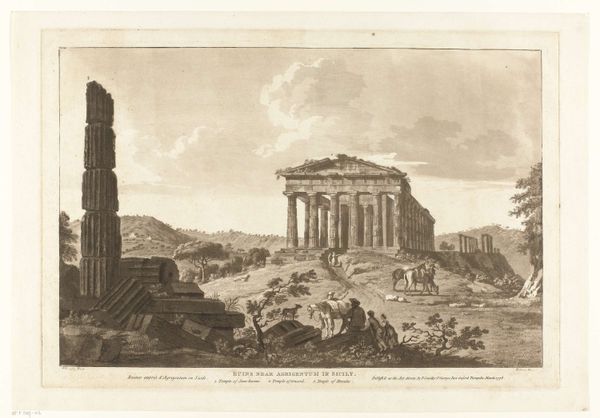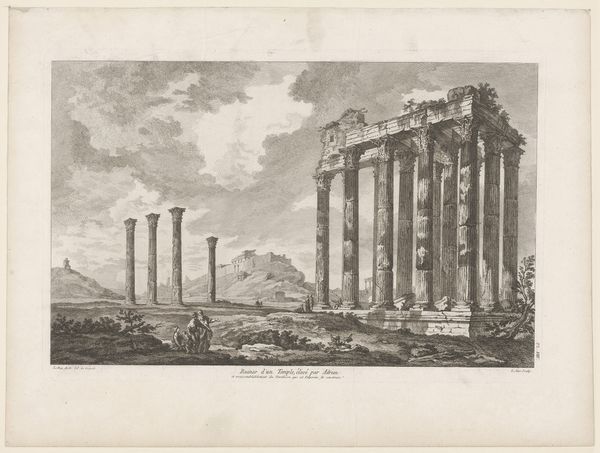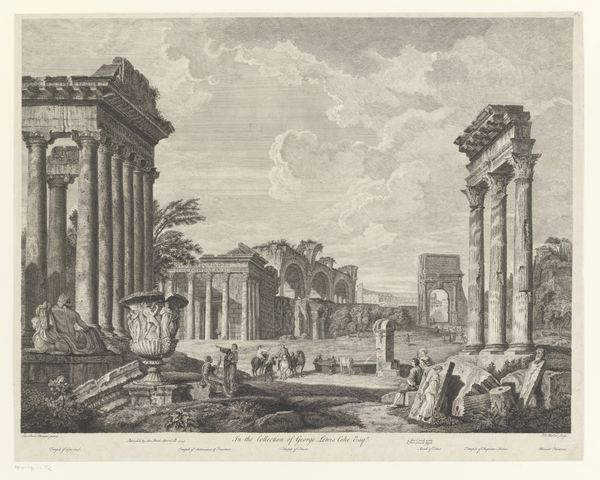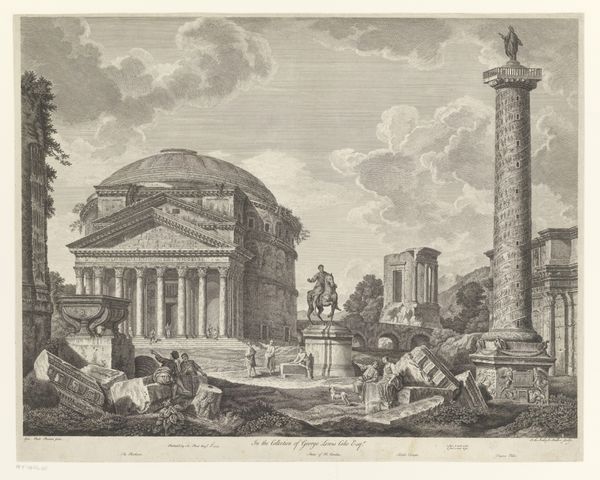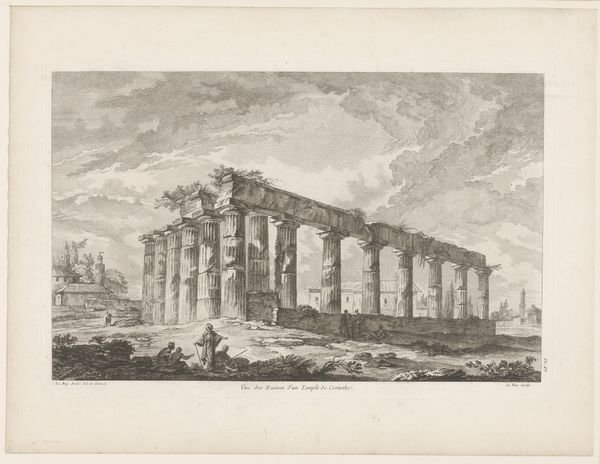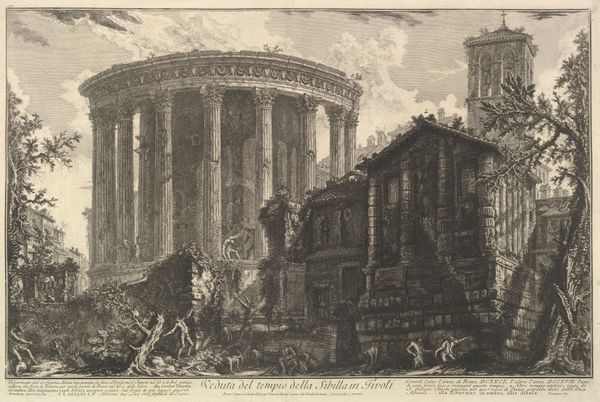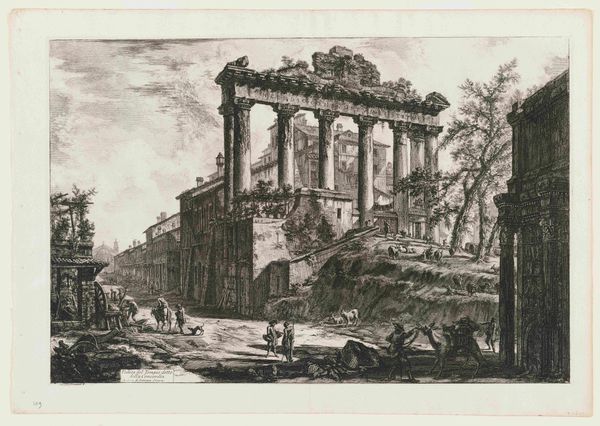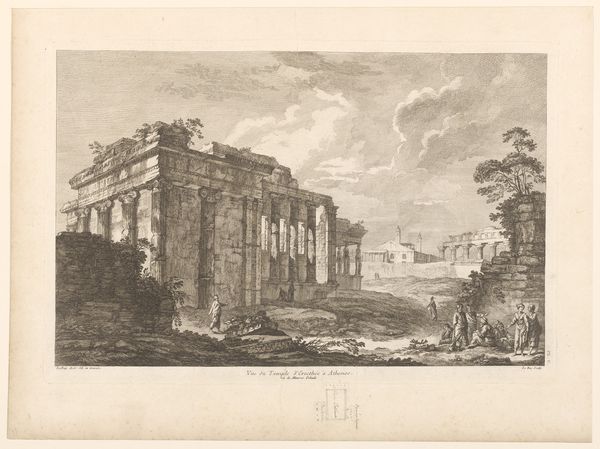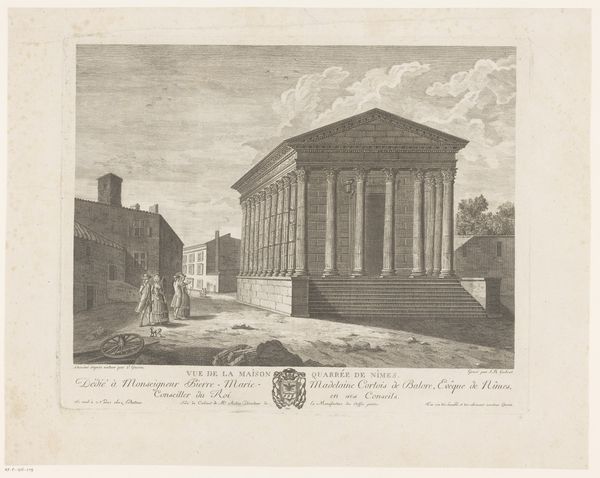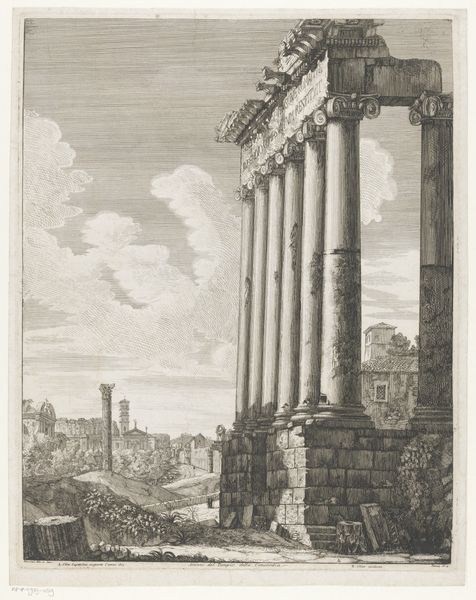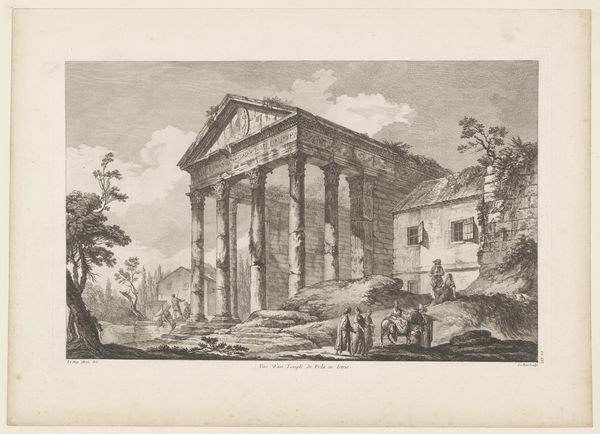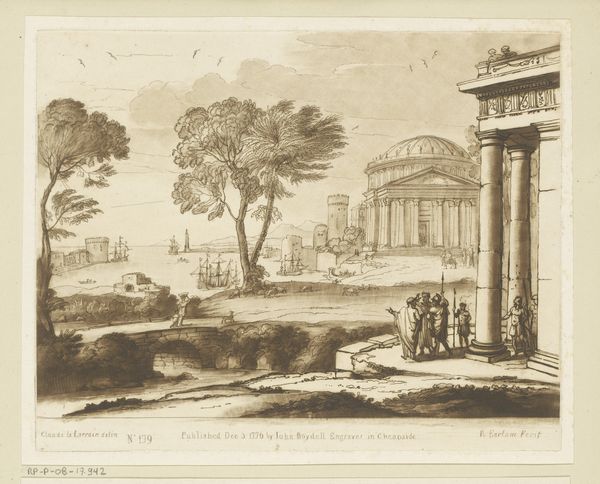
print, engraving, architecture
#
neoclacissism
# print
#
old engraving style
#
landscape
#
cityscape
#
history-painting
#
engraving
#
architecture
Dimensions: height 301 mm, width 467 mm
Copyright: Rijks Museum: Open Domain
Editor: Here we have "Gezicht op de tempel van Hephaistos," or "View of the Temple of Hephaistos," a 1758 engraving by Jacques Philippe Le Bas, currently housed at the Rijksmuseum. I’m really struck by how the precision of the architecture contrasts with the wild, almost overgrown state it’s in. What draws your eye when you look at this piece? Curator: Ah, yes, isn't it a beautiful melancholy dance between the enduring strength of classical architecture and the relentless touch of time? For me, it sparks thoughts of how civilizations rise and crumble, leaving behind whispers in stone. Le Bas has masterfully captured that precise moment. Look at how he uses the engraving technique to suggest both the solidity of the temple's form and the crumbling nature of time's touch, the feathery lines implying not just light, but a certain ephemerality. What emotions does that tension conjure for you? Editor: I guess it makes me think about how even the most powerful, lasting structures are eventually reclaimed by nature or history. It feels kind of humbling. But it also makes me wonder – was this romanticized view of ruins common for the time? Curator: Absolutely! The 18th century had a profound fascination with the classical world, fueled by archaeological discoveries and a renewed interest in ancient history. But they weren't just copying ancient forms. There's a distinctly romantic filter here. People imagined themselves as latter-day philosophers, contemplating life’s big questions amongst the grandeur of the ruins. What kind of story do you imagine happening here? Editor: Maybe it’s less about the specific people, and more about the broader sweep of time – like the ruins are almost more important than whoever's visiting them. I never really considered the “romantic filter” aspect before. Curator: It’s all a delicate blend of observing, idealizing, and inventing a relationship with the past. Seeing how artists like Le Bas negotiate those elements can open a whole new perspective on art history. Editor: Definitely. I'll never look at Neoclassical art the same way again! Thanks for sharing your insight.
Comments
No comments
Be the first to comment and join the conversation on the ultimate creative platform.
